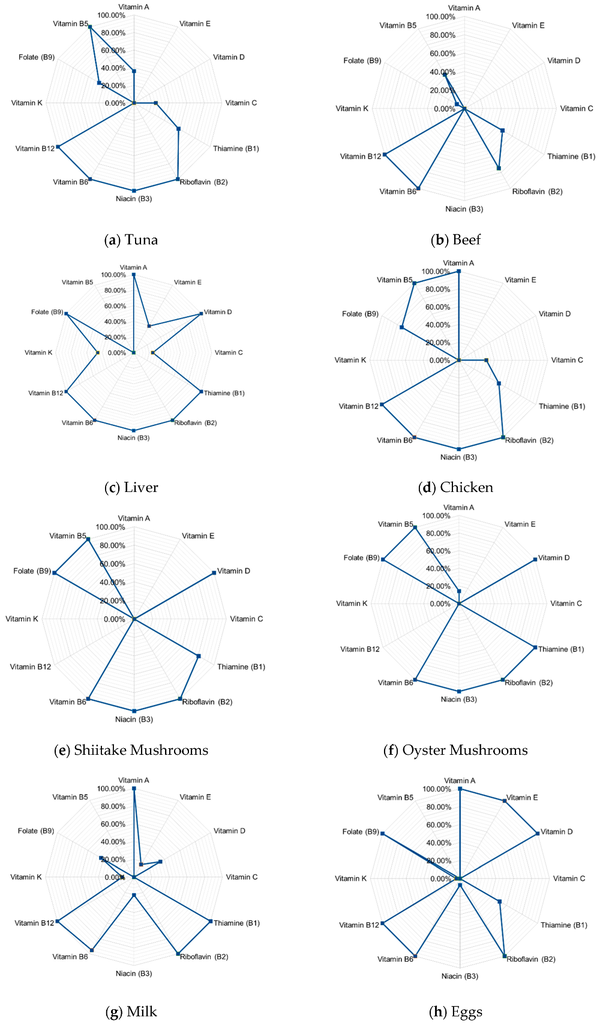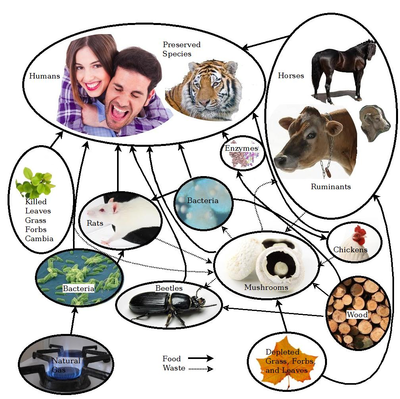Source
- David C. Denkenberger and Joshua M. Pearce, Micronutrient Availability in Alternative Foods During Agricultural Catastrophes. Agriculture 2018, 8(11), 169; https://doi.org/10.3390/agriculture8110169 open access
Abstract

Several catastrophes could block the sun, including asteroid/comet impact, super volcanic eruption, and nuclear war with the burning of cities (nuclear winter). Previous work has analyzed alternate food supplies (e.g., mushrooms growing on dead trees, bacteria growing on natural gas). This was shown to be technically capable of feeding everyone with macronutrients (protein, carbohydrates, and lipids) and minerals, although economics and politics remain uncertain. The present work analyzes vitamin availability in such alternative food scenarios. The vitamin content of various alternate foods is compared to the US recommended daily allowance (RDA) as well as the average requirement defined by the European Food Safety Authority (EFSA) and insufficiencies of single food sources are discussed. Single alternate food sources are always deficient in some vitamins, and the problems associated with this are discussed. To prevent disease in an alternative food scenario a wide range of foods must be consumed, or the diet must be supplemented. Backup plans discussed include chemical synthesis of vitamins, plants grown with artificial light and growing bacteria rich in certain vitamins. Finally, insights from this analysis are provided for combating existing micronutritional deficiencies using alternative foods today. View Full-Text
Keywords
alternate food; alternative food; essential nutrients; existential risk; global catastrophic risk; nuclear war; micronutrients; nutrients; public health; vitamins
See Also

- Feeding Everyone No Matter What - The full book main page
- David Denkenberger and Joshua Pearce, Feeding Everyone No Matter What: Managing Food Security After Global Catastrophe , 1st Edition, Academic Press, 2015
- Free Preview: Google books
- Cover on Academia
- Facebook page
- Alternative Foods as a Solution to Global Food Supply Catastrophes
- Resilience to global food supply catastrophes
- Feeding Everyone if the Sun is Obscured and Industry is Disabled
- Cost-Effectiveness of Interventions for Alternate Food to Address Agricultural Catastrophes Globally
- Feeding Everyone: Solving the Food Crisis in Event of Global Catastrophes that Kill Crops or Obscure the Sun
- Food without sun: Price and life-saving potential
- Cost-effectiveness of interventions for alternate food in the United States to address agricultural catastrophes
- Micronutrient Availability in Alternative Foods During Agricultural Catastrophes
- Preliminary Automated Determination of Edibility of Alternative Foods: Non-Targeted Screening for Toxins in Red Maple Leaf Concentrate
- Open Source Software Toolchain for Automated Non-Targeted Screening for Toxins in Alternative Foods
- Scaling of greenhouse crop production in low sunlight scenarios
- Potential of microbial protein from hydrogen for preventing mass starvation in catastrophic scenarios
- U.S. Potential of Sustainable Backyard Distributed Animal and Plant Protein Production During & After Pandemics
- Global distribution of forest classes and leaf biomass for use as alternative foods to minimize malnutrition
- Long-term cost-effectiveness of interventions for loss of electricity/industry compared to artificial general intelligence safety
- Long term cost-effectiveness of resilient foods for global catastrophes compared to artificial general intelligence safety
- Rapid repurposing of pulp and paper mills, biorefineries, and breweries for lignocellulosic sugar production in global food catastrophes
- Nutrition in Abrupt Sunlight Reduction Scenarios: Envisioning Feasible Balanced Diets on Resilient Foods
- Methane Single Cell Protein: securing protein supply during global food catastrophes
- Killing two birds with one stone: chemical and biological upcycling of polyethylene terephthalate plastics into food
- How Easy is it to Feed Everyone? Economic Alternatives to Eliminate Human Nutrition Deficits
- Quantifying Alternative Food Potential of Agricultural Residue in Rural Communities of Sub-Saharan Africa
- Yield and Toxin Analysis of Leaf Protein Concentrate from Common North American Coniferous Trees
- Toxic Analysis of Leaf Protein Concentrate Regarding Common Agricultural Residues
- Towards Sustainable Protein Sources: The Thermal and Rheological Properties of Alternative Proteins
Additional Information
- ALLFED
- Dave Denkenberger Publications
- OSE Wiki "Synfood" (i.e. protein and other dietary components from microbial organisms fed on gas or other hydrocarbons)






